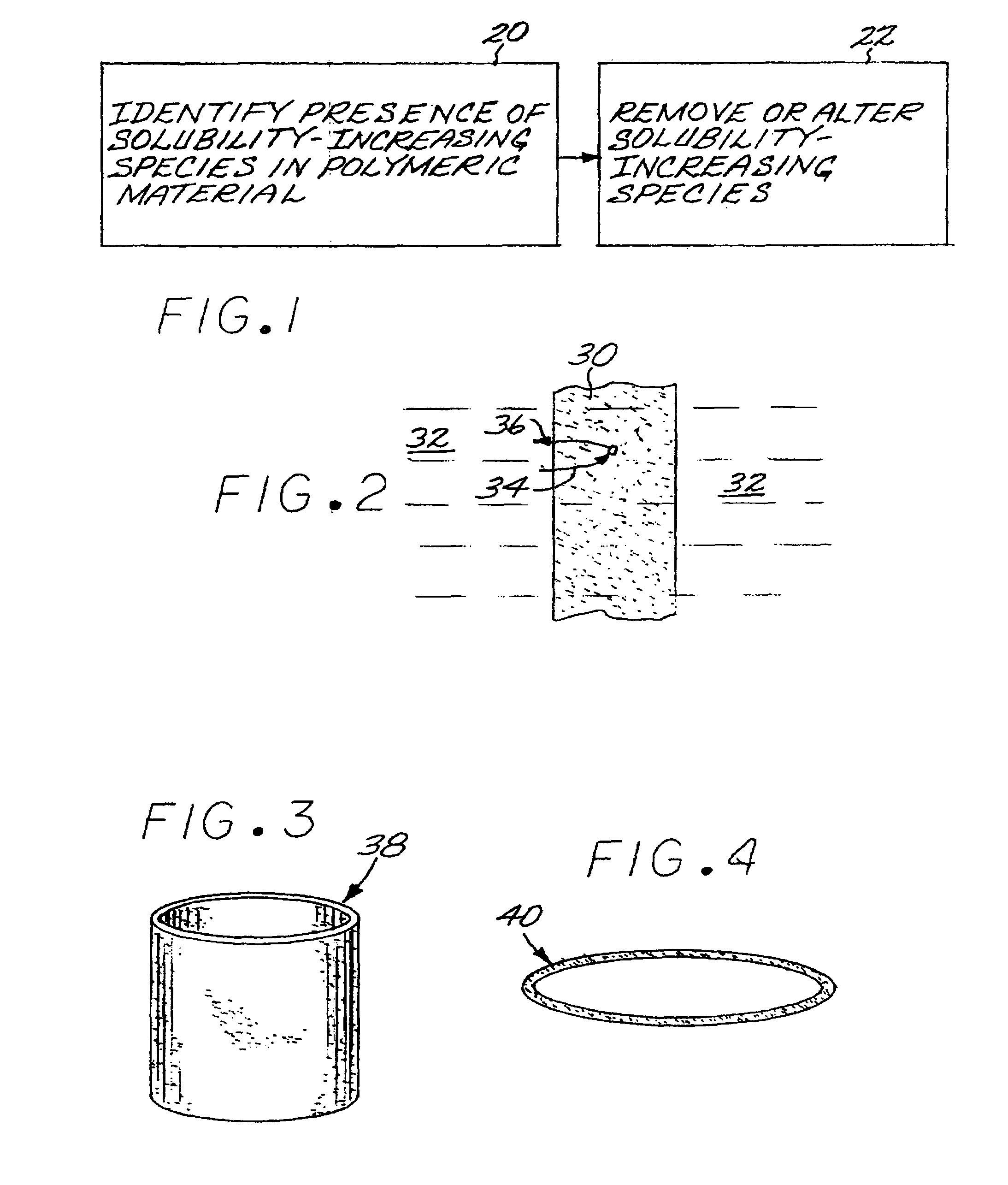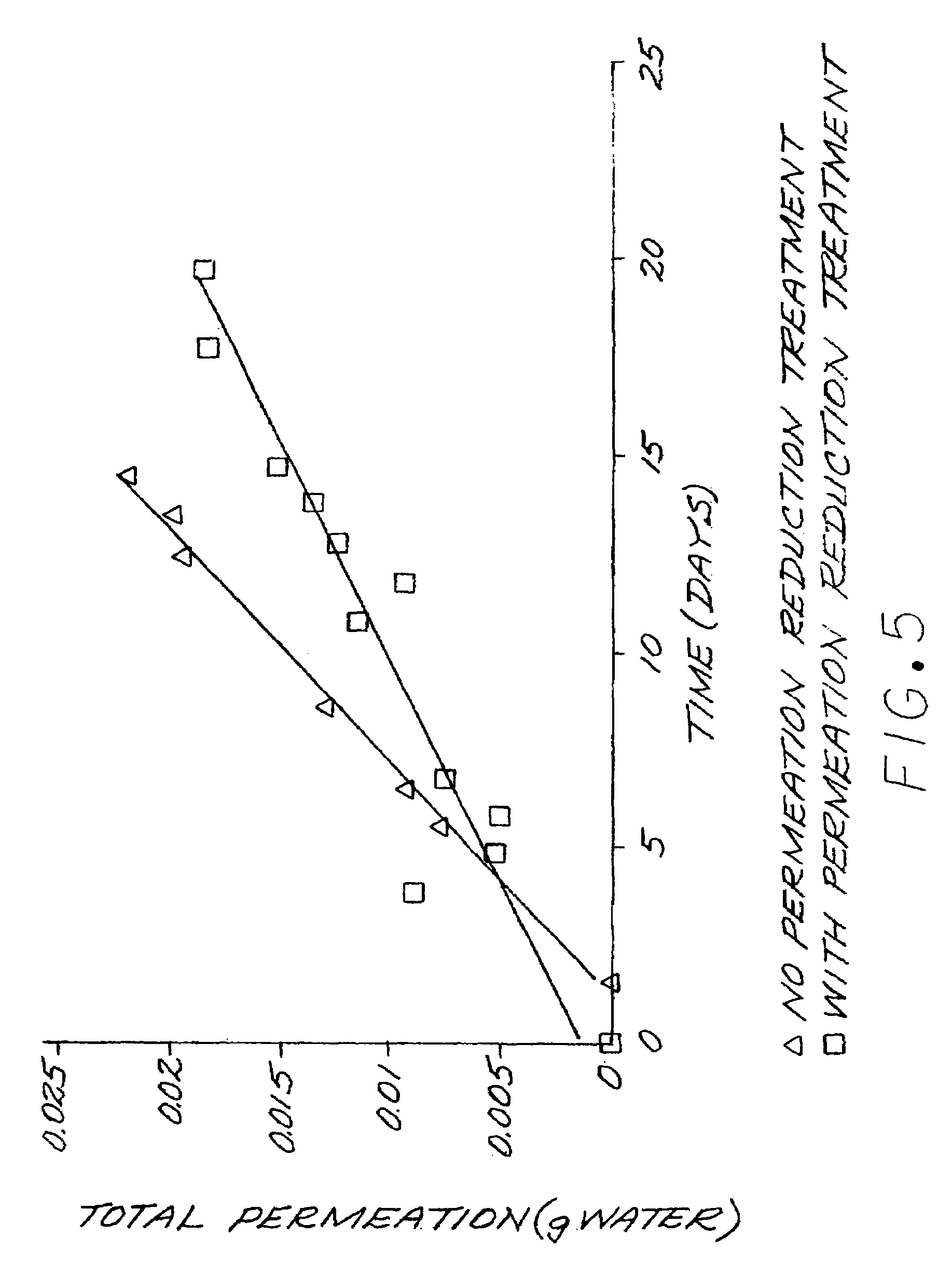Reduction of permeation through a polymer
a polymer and permeable technology, applied in the field of reducing permeation through a polymer, can solve the problems of inability to tolerate the leakage of tiny amounts the damage of electronic circuitry such as a guidance system, and the inability to tolerate the leakage of fluid through the container wall or past the seal, etc., and achieve the effect of a larger effect on the solubility of the permeable species
- Summary
- Abstract
- Description
- Claims
- Application Information
AI Technical Summary
Benefits of technology
Problems solved by technology
Method used
Image
Examples
Embodiment Construction
[0022]The permeability of a polymeric material to a permeable species (i.e., a diffusate) is proportional to the number of molecules of the permeable species that pass through the polymeric material per unit of time, per unit of area, and per unit of pressure difference that serves as the driving force for the permeation. The foundation for the present approach is that the permeability P may be expressed as the product of the diffusion coefficient D of the permeable species in the polymeric material times the solubility S of the permeable species in the polymeric material, or P=D×S. The present approach reduces the permeability P by reducing the solubility S. The solubility is reduced by reducing the content of a “solubility-increasing species”, which is defined as a species whose presence in the polymeric material tends to increase the solubility of the permeable species by reversible absorption and desorption.
[0023]FIG. 1 depicts a preferred approach for practicing an embodiment o...
PUM
| Property | Measurement | Unit |
|---|---|---|
| thick | aaaaa | aaaaa |
| permeation rate | aaaaa | aaaaa |
| permeability | aaaaa | aaaaa |
Abstract
Description
Claims
Application Information
 Login to View More
Login to View More - R&D
- Intellectual Property
- Life Sciences
- Materials
- Tech Scout
- Unparalleled Data Quality
- Higher Quality Content
- 60% Fewer Hallucinations
Browse by: Latest US Patents, China's latest patents, Technical Efficacy Thesaurus, Application Domain, Technology Topic, Popular Technical Reports.
© 2025 PatSnap. All rights reserved.Legal|Privacy policy|Modern Slavery Act Transparency Statement|Sitemap|About US| Contact US: help@patsnap.com


